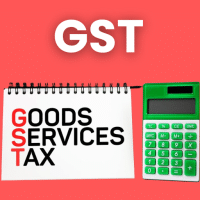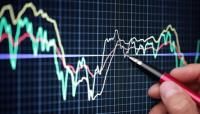B Com Exam > B Com Questions > How does an increase in total purchasing affe...
Start Learning for Free
How does an increase in total purchasing affect the Marginal Efficiency of Investment (MEI)?
- a)It has no impact on the MEI.
- b)It decreases the MEI.
- c)It makes the MEI curve less elastic.
- d)It shifts the MEI curve to the left.
Correct answer is option 'D'. Can you explain this answer?
Verified Answer
How does an increase in total purchasing affect the Marginal Efficienc...
An increase in total purchasing tends to shift the MEI curve to the right, indicating that more induced investment occurs at a given level of interest rate. This shift reflects the increased investment demand resulting from higher total purchasing.
View all questions of this test
Most Upvoted Answer
How does an increase in total purchasing affect the Marginal Efficienc...
Understanding Marginal Efficiency of Investment (MEI)
The Marginal Efficiency of Investment (MEI) is a crucial concept in economics that reflects the expected profitability of additional investment in capital. When total purchasing increases, the MEI curve can be significantly impacted.
Impact of Increased Total Purchasing
- Increased Demand for Goods: An increase in total purchasing typically indicates a rise in demand for goods and services. This heightened demand can lead businesses to invest more in capital to meet the needs of consumers.
- Shifting the MEI Curve: When total purchasing increases, the MEI curve shifts to the left. This shift signifies that for any given level of investment, the expected return decreases. This is primarily because:
- Higher Costs of Investment: As more firms invest to cater to increased demand, the costs of production inputs may rise, leading to lower marginal returns on additional investments.
- Diminishing Returns: The principle of diminishing returns suggests that as more capital is employed, the additional output generated from each unit of capital tends to decrease, thus lowering the MEI.
Conclusion
In summary, an increase in total purchasing affects the MEI by shifting the curve to the left, indicating reduced profitability for additional investments. This aligns with the economic principle that increased demand can lead to higher costs and lower marginal returns, making option 'D' correct. Understanding this relationship helps in making informed investment decisions in a dynamic market.
The Marginal Efficiency of Investment (MEI) is a crucial concept in economics that reflects the expected profitability of additional investment in capital. When total purchasing increases, the MEI curve can be significantly impacted.
Impact of Increased Total Purchasing
- Increased Demand for Goods: An increase in total purchasing typically indicates a rise in demand for goods and services. This heightened demand can lead businesses to invest more in capital to meet the needs of consumers.
- Shifting the MEI Curve: When total purchasing increases, the MEI curve shifts to the left. This shift signifies that for any given level of investment, the expected return decreases. This is primarily because:
- Higher Costs of Investment: As more firms invest to cater to increased demand, the costs of production inputs may rise, leading to lower marginal returns on additional investments.
- Diminishing Returns: The principle of diminishing returns suggests that as more capital is employed, the additional output generated from each unit of capital tends to decrease, thus lowering the MEI.
Conclusion
In summary, an increase in total purchasing affects the MEI by shifting the curve to the left, indicating reduced profitability for additional investments. This aligns with the economic principle that increased demand can lead to higher costs and lower marginal returns, making option 'D' correct. Understanding this relationship helps in making informed investment decisions in a dynamic market.

|
Explore Courses for B Com exam
|

|
Question Description
How does an increase in total purchasing affect the Marginal Efficiency of Investment (MEI)?a)It has no impact on the MEI.b)It decreases the MEI.c)It makes the MEI curve less elastic.d)It shifts the MEI curve to the left.Correct answer is option 'D'. Can you explain this answer? for B Com 2025 is part of B Com preparation. The Question and answers have been prepared according to the B Com exam syllabus. Information about How does an increase in total purchasing affect the Marginal Efficiency of Investment (MEI)?a)It has no impact on the MEI.b)It decreases the MEI.c)It makes the MEI curve less elastic.d)It shifts the MEI curve to the left.Correct answer is option 'D'. Can you explain this answer? covers all topics & solutions for B Com 2025 Exam. Find important definitions, questions, meanings, examples, exercises and tests below for How does an increase in total purchasing affect the Marginal Efficiency of Investment (MEI)?a)It has no impact on the MEI.b)It decreases the MEI.c)It makes the MEI curve less elastic.d)It shifts the MEI curve to the left.Correct answer is option 'D'. Can you explain this answer?.
How does an increase in total purchasing affect the Marginal Efficiency of Investment (MEI)?a)It has no impact on the MEI.b)It decreases the MEI.c)It makes the MEI curve less elastic.d)It shifts the MEI curve to the left.Correct answer is option 'D'. Can you explain this answer? for B Com 2025 is part of B Com preparation. The Question and answers have been prepared according to the B Com exam syllabus. Information about How does an increase in total purchasing affect the Marginal Efficiency of Investment (MEI)?a)It has no impact on the MEI.b)It decreases the MEI.c)It makes the MEI curve less elastic.d)It shifts the MEI curve to the left.Correct answer is option 'D'. Can you explain this answer? covers all topics & solutions for B Com 2025 Exam. Find important definitions, questions, meanings, examples, exercises and tests below for How does an increase in total purchasing affect the Marginal Efficiency of Investment (MEI)?a)It has no impact on the MEI.b)It decreases the MEI.c)It makes the MEI curve less elastic.d)It shifts the MEI curve to the left.Correct answer is option 'D'. Can you explain this answer?.
Solutions for How does an increase in total purchasing affect the Marginal Efficiency of Investment (MEI)?a)It has no impact on the MEI.b)It decreases the MEI.c)It makes the MEI curve less elastic.d)It shifts the MEI curve to the left.Correct answer is option 'D'. Can you explain this answer? in English & in Hindi are available as part of our courses for B Com.
Download more important topics, notes, lectures and mock test series for B Com Exam by signing up for free.
Here you can find the meaning of How does an increase in total purchasing affect the Marginal Efficiency of Investment (MEI)?a)It has no impact on the MEI.b)It decreases the MEI.c)It makes the MEI curve less elastic.d)It shifts the MEI curve to the left.Correct answer is option 'D'. Can you explain this answer? defined & explained in the simplest way possible. Besides giving the explanation of
How does an increase in total purchasing affect the Marginal Efficiency of Investment (MEI)?a)It has no impact on the MEI.b)It decreases the MEI.c)It makes the MEI curve less elastic.d)It shifts the MEI curve to the left.Correct answer is option 'D'. Can you explain this answer?, a detailed solution for How does an increase in total purchasing affect the Marginal Efficiency of Investment (MEI)?a)It has no impact on the MEI.b)It decreases the MEI.c)It makes the MEI curve less elastic.d)It shifts the MEI curve to the left.Correct answer is option 'D'. Can you explain this answer? has been provided alongside types of How does an increase in total purchasing affect the Marginal Efficiency of Investment (MEI)?a)It has no impact on the MEI.b)It decreases the MEI.c)It makes the MEI curve less elastic.d)It shifts the MEI curve to the left.Correct answer is option 'D'. Can you explain this answer? theory, EduRev gives you an
ample number of questions to practice How does an increase in total purchasing affect the Marginal Efficiency of Investment (MEI)?a)It has no impact on the MEI.b)It decreases the MEI.c)It makes the MEI curve less elastic.d)It shifts the MEI curve to the left.Correct answer is option 'D'. Can you explain this answer? tests, examples and also practice B Com tests.

|
Explore Courses for B Com exam
|

|
Signup for Free!
Signup to see your scores go up within 7 days! Learn & Practice with 1000+ FREE Notes, Videos & Tests.


















